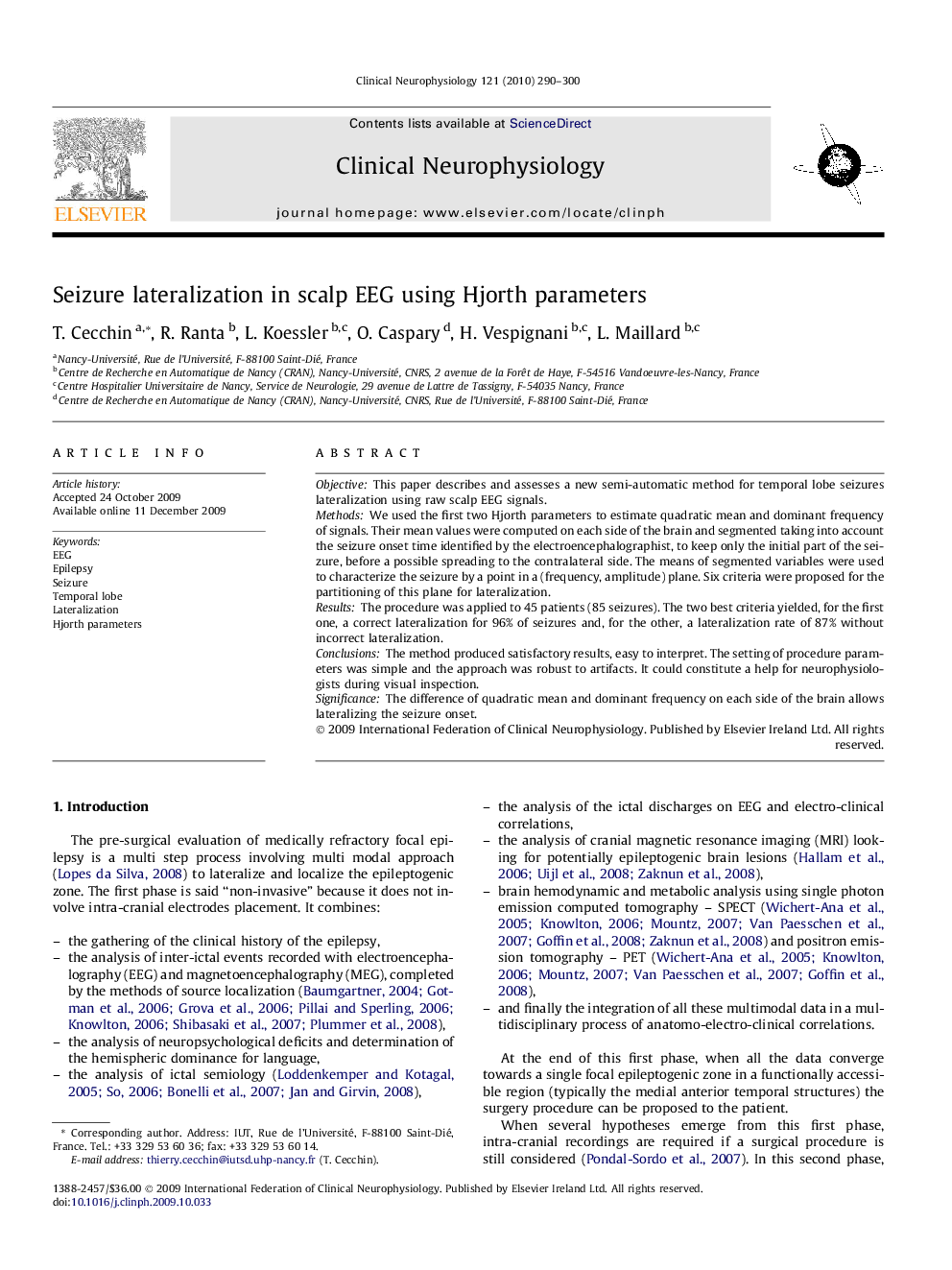| Article ID | Journal | Published Year | Pages | File Type |
|---|---|---|---|---|
| 3045143 | Clinical Neurophysiology | 2010 | 11 Pages |
ObjectiveThis paper describes and assesses a new semi-automatic method for temporal lobe seizures lateralization using raw scalp EEG signals.MethodsWe used the first two Hjorth parameters to estimate quadratic mean and dominant frequency of signals. Their mean values were computed on each side of the brain and segmented taking into account the seizure onset time identified by the electroencephalographist, to keep only the initial part of the seizure, before a possible spreading to the contralateral side. The means of segmented variables were used to characterize the seizure by a point in a (frequency, amplitude) plane. Six criteria were proposed for the partitioning of this plane for lateralization.ResultsThe procedure was applied to 45 patients (85 seizures). The two best criteria yielded, for the first one, a correct lateralization for 96% of seizures and, for the other, a lateralization rate of 87% without incorrect lateralization.ConclusionsThe method produced satisfactory results, easy to interpret. The setting of procedure parameters was simple and the approach was robust to artifacts. It could constitute a help for neurophysiologists during visual inspection.SignificanceThe difference of quadratic mean and dominant frequency on each side of the brain allows lateralizing the seizure onset.
